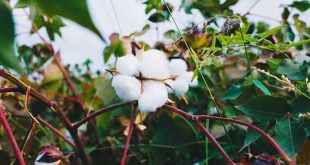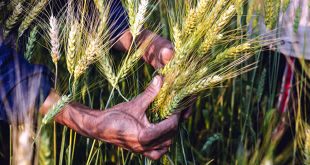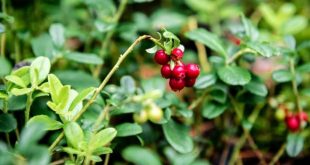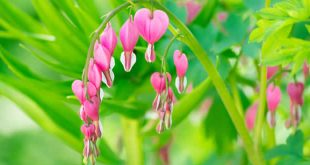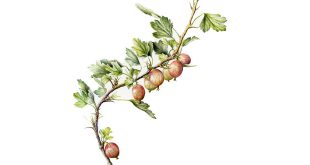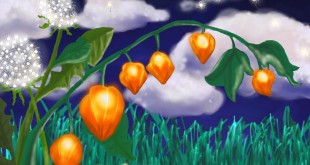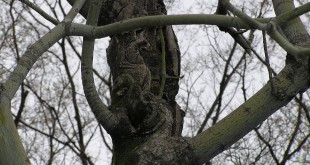Kingdom: Plantae Family: Malvaceae Order: Fagales Genus: Gossypium Cotton Plant — Cotton is a soft, staple fiber that grows around the seeds of the cotton plant (Gossypium sp.), a shrub native to tropical and subtropical regions around the world, including the Americas, India, and Africa. However, virtually all of the commercial cotton grown today worldwide is grown from varieties of …
Read More »Betel: Piper betle Medicinal Plant Encyclopedia
Kingdom: Plantae Family: Piperaceae Order: Piperales Genus: Piper Betel Medical Plant — The Betel (Piper betle) is a spice whose leaves have medicinal properties. The plant is known by a series of different names in the regions in which it is consumed – among these are Vetrilai (Tamil), Vettila (Malayalam). The plant is evergreen and perennial, with glossy heart-shaped leaves …
Read More »Barley: Cereal Grain Encyclopedia
Kingdom: Plantae Family: Poaceae Order: Poales Genus: Hordeum Barley — Barley (Hordeum vulgare) is an annual cereal grain, which serves as a major animal feed crop, with smaller amounts used for malting and in health food. It is a member of the grass family Poaceae. In 2005, barley ranked fourth in quantity produced and in area of cultivation of cereal …
Read More »Cranberry: Plant, Shrubs, Vines, Cultivation, Fruit
Kingdom: Plantae Family: Ericaceae Tribe: – Genus: Vaccinium Cranberry — Cranberries are a group of evergreen dwarf shrubs or trailing vines in the genus Vaccinium subgenus Oxycoccus, or in some treatments, in the distinct genus Oxycoccus. They are found in acidic bogs throughout the cooler parts of the Northern Hemisphere. Cranberry: Plant Cranberry are low, creeping shrubs or vines up …
Read More »Bleeding Heart: Dicentra Flowering Plant
Kingdom: Plantae Family: Papaveraceae Tribe: Fumarieae Genus: Dicentra Bleeding Heart Plant— Dicentra is a genus of about 20 species of herbaceous flowering plants in the family Fumariaceae, native to Asia and North America. The common name, bleeding heart, is used for many of the species. This name comes from the appearance of the pink flower, which resembles the shape of …
Read More »Gooseberry – Plants & Trees Encyclopedia for Kids
Gooseberry – Plants & Trees Encyclopedia for Kids: The gooseberry Ribes uva-crispa (syn. R. grossularia) is a species of Ribes, native to Europe, northwestern Africa and southwestern Asia. It is one of several similar species in the subgenus Grossularia; for the other related species (e.g. North American Gooseberry Ribes hirtellum). Although usually placed as a subgenus within Ribes, a few taxonomists …
Read More »Chinese Lantern Plant
Chinese Lantern Plant — Physalis alkekengi (Bladder-cherry, Chinese Lantern, Japanese-lantern, or Winter cherry; Japanese: hōzuki), is a relative of P. peruviana (Cape Gooseberry), easily identifiable by the larger, bright orange to red papery covering over its fruit, which resemble Chinese lanterns. It is native from southern Europe east across southern Asia to Japan. It is a herbaceous perennial plant growing …
Read More »Chinese Parasol Tree
Chinese Parasol Tree — Chinese parasol tree is an ornamental plant or tree of the cacao, or chocolate, of the family Sterculiaceae of the order Malvales, native to Asia. It grows to a height of 12 m (40 feet). It has alternate, deciduous leaves up to 30 cm (12 inches) across and small greenish white flowers that are borne in …
Read More »Oak, Live
Oak, Live — Live Oak or evergreen oak is a general term for a number of unrelated oaks in several different sections of the genus Quercus that happen to share the character of evergreen foliage. The name live oak comes from the fact that evergreen oaks are still green and “live” in winter, when other oaks are dormant, leafless and …
Read More »Zinnia
Zinnia — Zinnia is a genus of 20 species of annual and perennial plants of family Asteraceae, originally from scrub and dry grassland in an area stretching from the American Southwest to South America, but primarily Mexico, and notable for their solitary long-stemmed flowers that come in a variety of bright colors. Zinnia leaves are opposite and usually stalkless, with …
Read More » Kids Portal For Parents India Kids Network
Kids Portal For Parents India Kids Network
